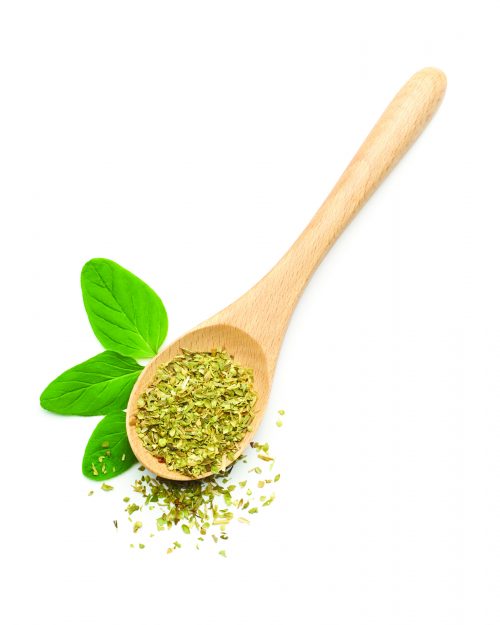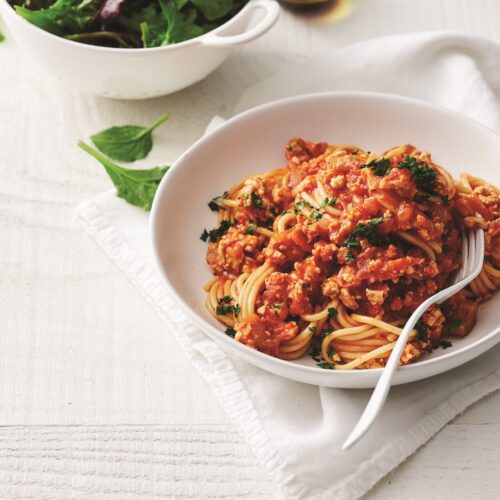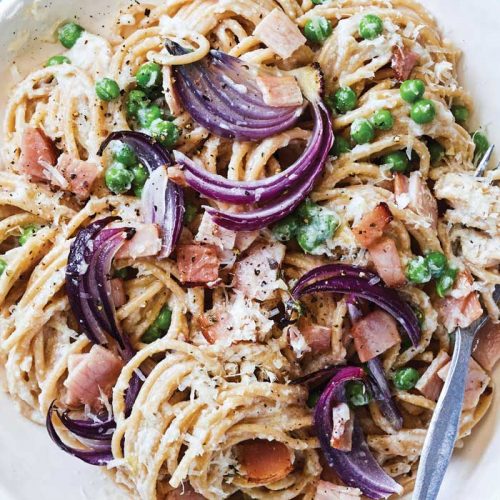
Oregano
Oregano contains high amounts of phenolic compounds, thought to be health-promoting. Although we use only small amounts in cooking, it all adds up, so let’s not be mean with it.
Use
Enjoying a natural affinity with tomato-based sauces, oregano has a big, bold flavour that works well with other strong flavours, e.g. garlic, lemon, anchovies, olives and cheese. Try dry-frying the resinous leaves and adding them to Mexican chilli recipes.
Oregano prefers growing in free-draining soils, in a sunny spot — try growing it in a pot. For cooking, pick the softer tips or slide your fingers along the stem, away from the tip, to remove the leaves. If using a whole sprig, remember to remove the woody stem at the end of cooking. Dried oregano is one of the more successful dried herbs and, in lesser amounts, is a good alternative to fresh.
Recipe ideas
Herby chicken and chickpeas with asparagus
Freezer-friendly bolognese sauce
Bay leaves
Use
Bay leaves, used in conjunction with other herbs and spices, help develop a gentle complexity of flavour in dishes like stews and sauces. Bay leaf is a key ingredient in the Filipino national dish adobo, and did you know that bay leaves were often used, together with nutmeg, to flavour rice puddings and custards before vanilla became widely available? Fresh bay leaves have a much stronger flavour than dried, so use sparingly. Remember to remove leaves at the end of cooking before serving.
The slow-growing Mediterranean bay laurel can reach a great height in your garden but, if trimmed regularly, serves not just as an ornamental shrub but as part of your fresh larder.
Recipe ideas
Vegetable and lentil soup
Pizza sauce
Kale
New Zealand-grown kale is rich in folate, calcium and vitamin C and delivers good amounts of fibre, potassium, iron, vitamins A and B6. What’s not to love?
Use
Kale is most commonly seen sliced finely in a salad, sautéed or cooked quickly as a vege (pairing well with pork and pulses), added to soups or juiced in a smoothie.
To prepare, wash leaves and remove the central stem. The leaves taste a little bitter when raw, but become sweeter when cooked. Try boiling them in salted water for 5 minutes but don’t overcook — largely agreed as the worst crime to inflict on kale.
Store kale in the fridge in the same way as cabbage.
Recipe idea
Savoury porridge with mushrooms, thyme, feta and kale
Celery
This low-energy vege adds fibre and potassium to our diet.
Use
Celery belongs to the aromatic Apiaceae family of plants, which explains its subtle similarity to other family members: parsley, parsnips, fennel and chervil. It grows readily in New Zealand and is delicious raw or cooked.
Celery is a cornerstone ingredient in mirepoix (two parts finely chopped onion to one part each of finely chopped carrot and celery, braised), an essential flavour base of French cuisine, due to its unique ability to help build flavour. Other cuisines use it in a similar way.
Keep celery in a plastic bag in the fridge for about a week — beyond this it tends to go limp.
Recipe ideas
Slow-cooked lamb and bean curry
Pasta with eggplant, tomato, chickpeas and feta
Green minestrone
www.healthyfood.com










